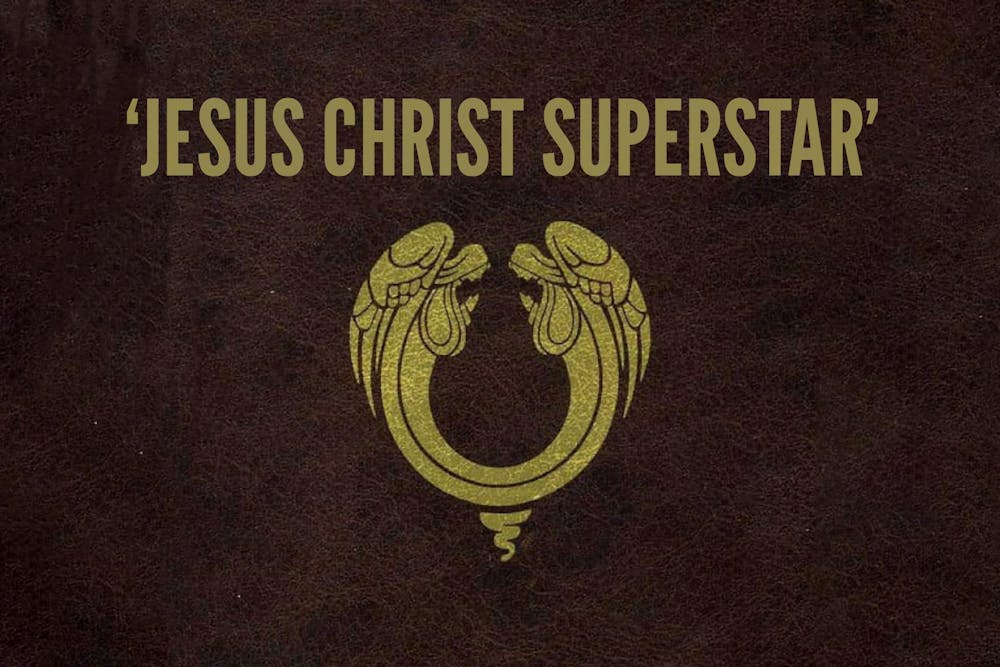There are countless works of art inspired by the Bible. From paintings to operas to statues and books and films, the Bible has influenced many artists to create new pieces, with some of these being considered the greatest works of art in human history. Sometimes, it feels like this phenomenon was limited to the Renaissance or a pre-modern era. But, even in contemporary media, television shows such as “The Chosen” and films like “Journey to Bethlehem” are still created, demonstrating that many creatives still draw upon holy texts when crafting new works. Creatives don’t even have to be of any denomination of Christianity to create a piece inspired by the Bible; case in point, Andrew Lloyd Webber’s “Jesus Christ Superstar.”
The concept album
In 1967, Andrew Lloyd Webber and Tim Rice collaborated on a “pop-oratorio” telling the story of the 12 tribes of Israel, as narrated in the Book of Genesis. This later became their second stage musical “Joseph and the Amazing Technicolor Dreamcoat,” after the future triumph of “Jesus Christ Superstar.” Riding off of their success, the duo wrote a song to be entered into the Eurovision Song Contest, titled “Try it and See.” It was not selected.
With rewritten lyrics, this song became “King Herod’s Song” in a concept album called “Jesus Christ Superstar.” Released in 1970, the album was both a proof-of-concept and a test drive for the stage rock opera that would debut the following year. One of the most interesting aspects of the album is that Webber identifies as agnostic, with his desire to make the show come from a respect for Christianity and a fascination with history. The album was a major success, charting above Carole King’s iconic album “Tapestry” in the United States when both dropped in 1971.
The stage musical
There is not a lot differentiating the stage show from the concept album, other than the physical performers acting it out. However, without the stage show, we would not have the other works based off of the original “Jesus Christ Superstar” album, as this was the visual template all future pieces would be based on. A cast album was released in 1972, from the professional Australian production that was running.
Oftentimes the album is credited as the first ever “rock opera.” This is a tricky matter, but it is definitely the first rock opera put on stage. “Tommy” by The Who was released in 1969, a full year before “Jesus Christ Superstar." The stage version, however, retitled “The Who’s Tommy,” wouldn’t be produced until the 1990s at the La Jolla Playhouse in San Diego.
The musical was a hit, and very successful. Debuting across the pond from its creators on Broadway in 1971, a West End production followed the next year. While both did well, critically and financially (though the BBC did regard the show and album as sacrilege), the show was not an awards favorite, though original Broadway's Jesus, Ben Vereen, was nominated for Best Actor in a Musical for the production.
Like most popular musicals, the show has received multiple revivals. My personal favorite was the 2012 British Arena Tour, and you can find an official recording of it online.
The film adaptation
This is where stuff gets weird. The plot of the film adaptation of “Jesus Christ Superstar,” with the same name as the musical and the album the musical was based on, is that a bunch of artists go out into the desert and perform their version of the Passion narrative. The album and musical become the performance, but the film’s start and end feature these actors and musicians on a bus in modern wear before they become their characters and after. Through this framing device, the implication of the film becomes clear: at the end of the story, the actors committed to their performance so hard that they killed the actor playing Jesus, or the performer has simply disappeared by other means, as he does not get on the bus with them — a fact that is pointed out.
Either way, the end of the film has some troubling, if not hilarious, implications. The film was released in 1973, only three years after the concept album and two after its stage debut.
Another notable filmed version is NBC’s 2018 “Live in Concert” broadcast, featuring John Legend as Jesus, Sara Bareilles as Mary Magdalene and Alice Cooper as King Herod.
The present situation
The world has not forgotten “Jesus Christ Superstar.” Currently, Britain has an ongoing tour of the musical and the show is still a popular choice for regional theater companies. Notre Dame’s own DeBartolo Performing Arts Center will host its sixth annual sing-along to the 1973 film on Thursday, March 28. This Easter season, make a pot of tea, get under a nice blanket (I’m assuming the weather in South Bend will stay as chilly as it has been these last few weeks) and enjoy the absurd masterpiece that is “Jesus Christ Superstar.” Whether it’s as an album, a movie, a reality show or with John Legend, there is clearly no shortage of ways to do so.










